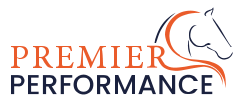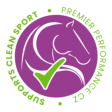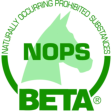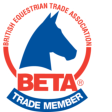in basket
Assessing your horse’s bodyweight and body condition
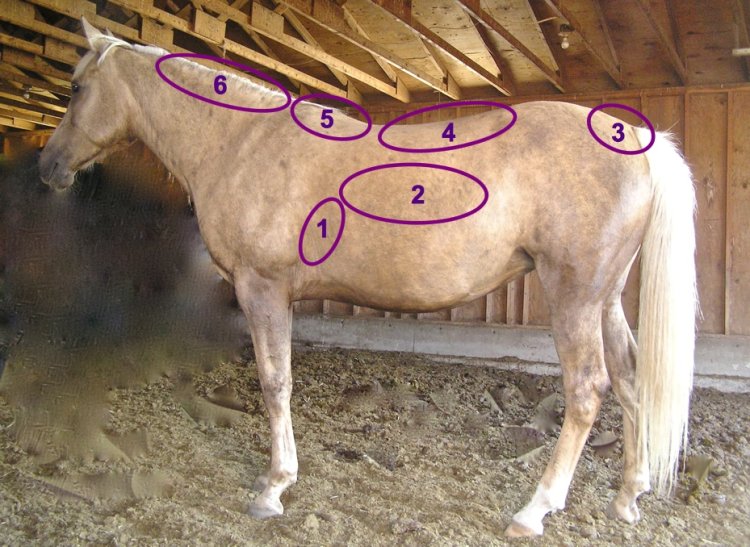
The ability to accurately assess your horse’s bodyweight is important for a number of reasons, including determining your horse’s nutrient requirements, particularly energy intake, administration of the correct amount of any medications, and to assess if they are maintaining, losing or gaining weight. Body condition refers to how much or how little fat coverage your horse has, and it is typically measured through a physical assessment of the horse where a score is given for the amount of fat cover the horse has.
Assessing your horse's bodyweight
The most accurate way to determine bodyweight is to use a weigh scale. There are various designs available, some of which are portable, but these do tend to be expensive and so not everyone has access to a weigh scale. Because of this there have been calculations developed to estimate bodyweight from measurements of body size. The simplest way of using these calculations is to purchase a commercial weigh tape, which estimates your horse’s weight from their girth circumference. Tapes are placed at the base of the withers and around the girth area just behind the elbow. When using a weigh tape ensure that your horse is standing square and take the measurement when your horse exhales so that the measurement does not include lung volume, which would affect the measurement from the weigh tape making it less accurate. Using a weigh tape is not as accurate as using weigh scales; however, it is more accurate than ‘guesstimating’ bodyweight by eye. Weigh tapes are also useful as a straightforward method of monitoring bodyweight on a regular basis. One thing to also bear in mind with weigh tapes is that their accuracy is decreased for horses at the extreme end of the sale, (i.e. very overweight or thin), pregnant mares, growing foals, or very fit horses. You can purchase weigh tapes specifically developed for ponies and some types of horses; however, if you use the standard weigh tape on these horses to monitor their relative changes in bodyweight, again this is still better than estimating by eye.
Another way of estimating bodyweight is to use calculations that take into account the height and length of the horse and this approach tends to be more accurate than using just the girth measurement. There are various different formulas that can be used to do this; therefore, if you do use this approach it is important that you consistently use the same measurements and formula and do not mix and match. For example, different formulas use measurements of girth circumference taken from various points; hence it is important to measure at the exact place indicated by the specific formula. The most widely used formula is that of Carroll and Huntington (1998), which uses the following equation:
Bodyweight (kg) = (heart girth (cm)2 x length (cm)) / 11877
Bodyweight should be monitored on a regular basis, at least once a month, but more frequently if the horse needs to lose or gain weight. If weighing weekly, it is important to pick the same day each week and also the same time of day to minimise variability. It is also good to try to ensure that the timing of the weighing is consistent relative to when the horse has been fed or exercised.
Assessing your horse's body condition
It is also important to regularly monitor your horse’s body condition; most recommend that this is done on a monthly basis since it takes at least that time for any change in BCS to be seen. This can be done by body condition scoring (BCS), which essentially measures fat accumulation in horses.
There have been various scales developed and each use specific criteria to assess BCS; for example the 0-5 point scale developed by Carroll and Huntington (1998) and the 1-9 point scale developed by Henneke et al. (1983). The 0 to 5 scale measures fat deposition in the neck, back and ribs, and pelvis areas, with each area scored separately. The pelvis score is adjusted if it differs by more than 1 but provides an overall average score.

Image credit By Montanabw (Own work) [CC BY-SA 3.0] https://creativecommons.org/licenses/by-sa/3.0, via Wikimedia Commons
The difference with the 9-point scale is that it measures body fat deposition in 6 areas (see photo above), rather than the 3 on the 5-point scale. This is considered by some to be a more accurate body condition scoring system for horses due to it assessing more areas of the body, plus it is in a wider range of scale (0-9). Each of the areas are scored separately, given a value of 1 (poor) to 9 (extremely fat) based on specific criteria developed for those specific areas. Scores are then finally averaged to give a single overall score on the scale.
It is important to realise that no BCS system is perfect and there are many possible factors that affect the accuracy of the system. For example, with conformation (animals that are high withered lead to slight inaccuracy), coat length (particularly in the winter months), pregnancy, gut fill, muscle development, and any bias by the person conducting the BCS evaluation.
Another factor to consider is that, similar to humans, horses are known to have areas of the body where fat accumulation (adiposity) in that area may signify an increased risk of disease. In horses, this area of concern is the neck whereby a “cresty neck” can be a risk factor for insulin dysregulation or laminitis. Given that the overall BCS is an average of the different areas scored, a horse that has a cresty neck and is normal in other areas can often dilute the effect of the cresty neck on the overall score, leading to the importance of this being lost. Therefore, Carter et al. (2009) developed the cresty neck system, which when used alongside the BCS system, allows you to differentiate generalised obesity from regional obesity. This is important for those animals that have regional adiposity, but are not generally overweight.
Summary recommendations for assessing your horse's bodyweight and body condition
- It is important to regularly monitor your horse’s bodyweight and body condition
- Bodyweight should be monitored weekly if the horse needs to gain or lose weight, otherwise monthly will suffice
- A weigh tape is not as accurate as using a weigh scale, but far better than guesstimating your horses weight by eye
- If a formula is used to estimate bodyweight then ensure the same formula and measurements are consistently used
- BCS should be evaluated monthly and using the same BCS system
It is important to be aware that a “cresty neck” may signify an increased risk of disease - If your horse is under or overweight seek veterinary advice
Article written for Premier Performance by Professor Jo-Anne Murray.
